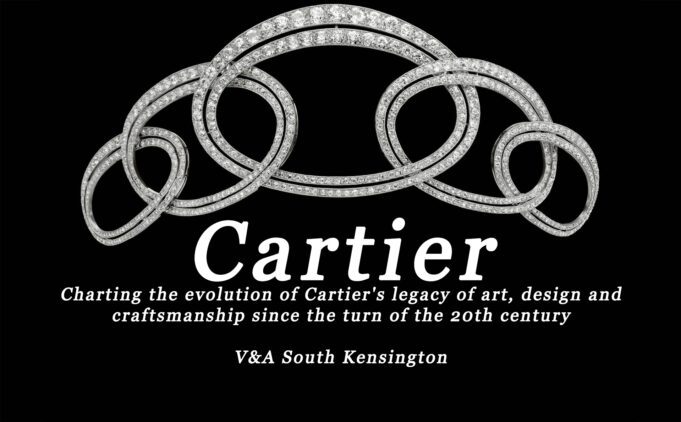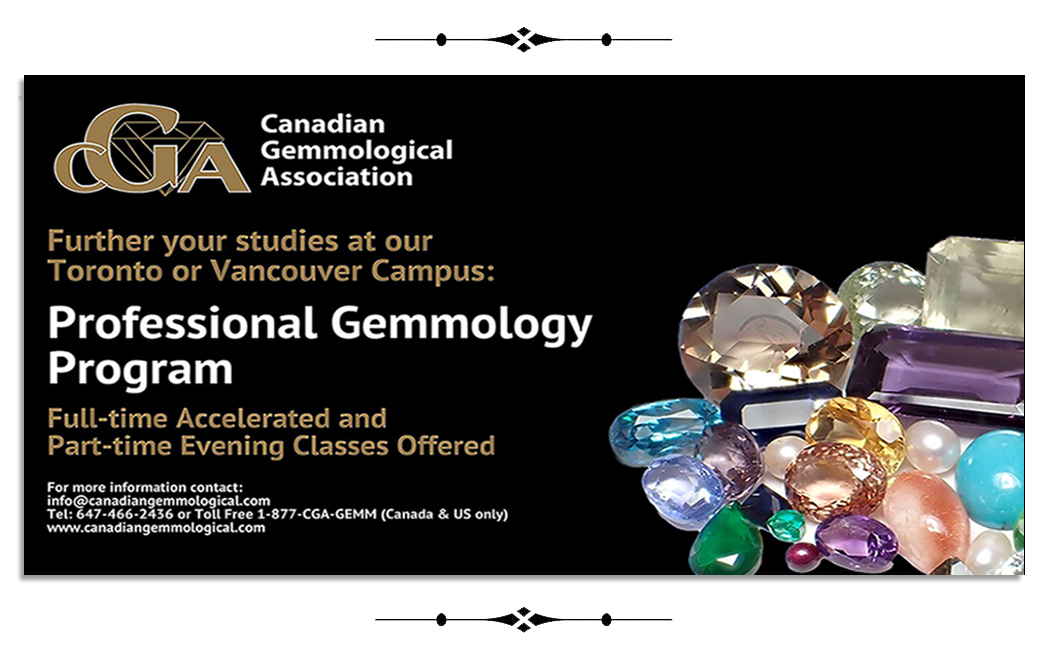The first major exhibition in almost 30 years dedicated to Cartier jewels and watches opened on April 12 and is scheduled until November 16, 2025, in the Sainsbury Gallery of London’s Victoria & Albert Museum – the V&A.
The V&A is proud to present the UK’s first major exhibition in nearly 30 years dedicated to Cartier.
Featuring over 350 dazzling objects, the exhibition traces the evolution of the Maison from the turn of the 20th century to today – showcasing everything from royal commissions and historic gemstones to iconic timepieces and rarely seen archival materials.
The exhibition celebrates Cartier’s pioneering approach to design and craftsmanship, highlighting some of its most legendary creations – including the Williamson Diamond Brooch, Grace Kelly’s engagement ring, and the iconic Panthère jewels – that led the Maison to become the first globally recognised jewellery house.
Designed by British architect and artist Asif Khan MBE, the exhibition offers a striking and immersive environment in which to experience over a century of innovation and artistry.
This exhibition, dedicated to Cartier jewels and watches, explores how the Maison became an unparalleled force in the jewellery and watch world. The exhibition examines the creativity of Cartier and the emergence of its signature style, the legacy of its technical ingenuity and craftsmanship, as well as its sophisticated approach to image-making and maintaining its legacy and relevance in a changing world.
“Cartier is one of the most famous jewellery houses in the world. This exhibition explores how Louis, Pierre and Jacques Cartier, together with their father Alfred, adopted a strategy of original design, exceptional craftmanship and international expansion that transformed the Parisian family jeweller into a household name.” – Helen Molesworth and Rachel Garrahan, V&A Curators
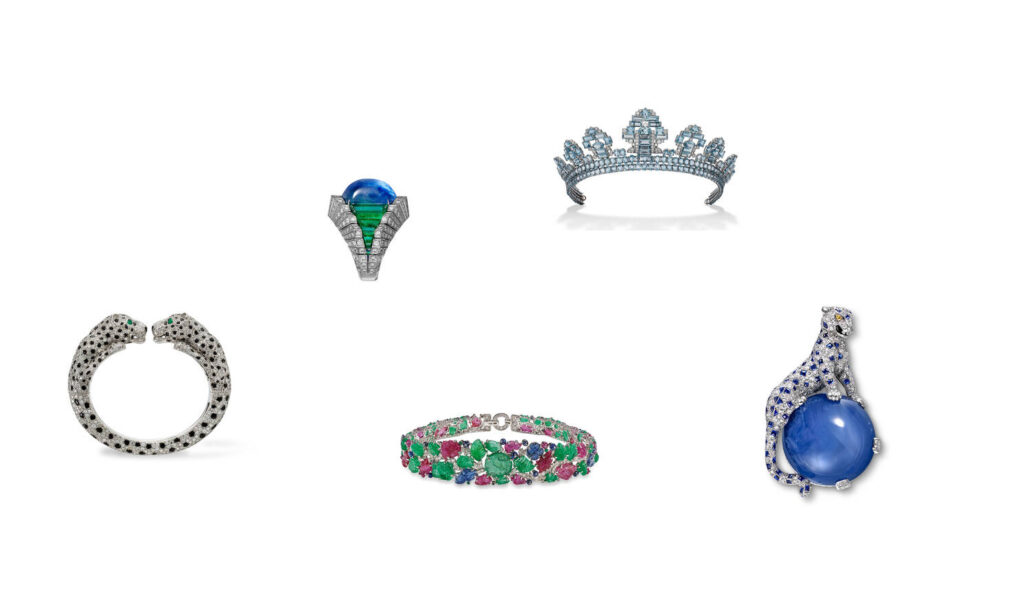
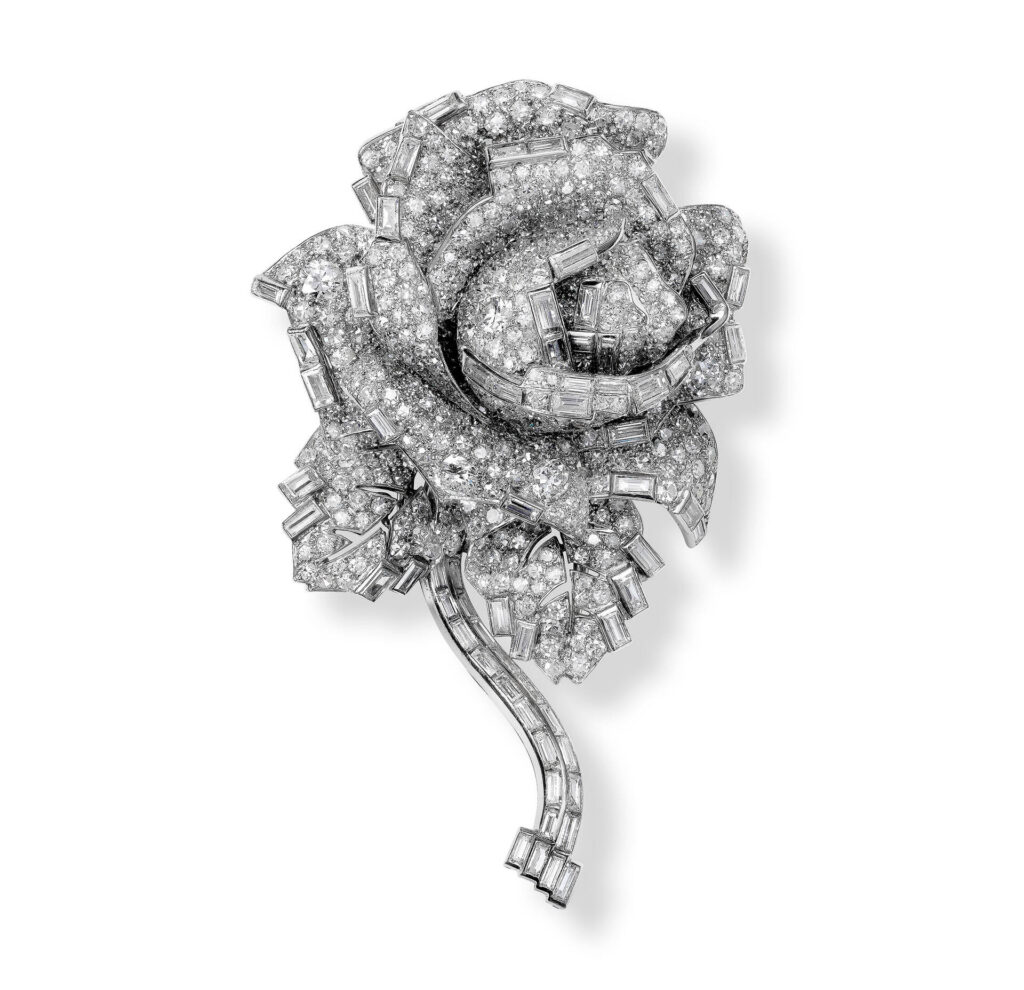
Photography: Nils Herrmann for Cartier Collection
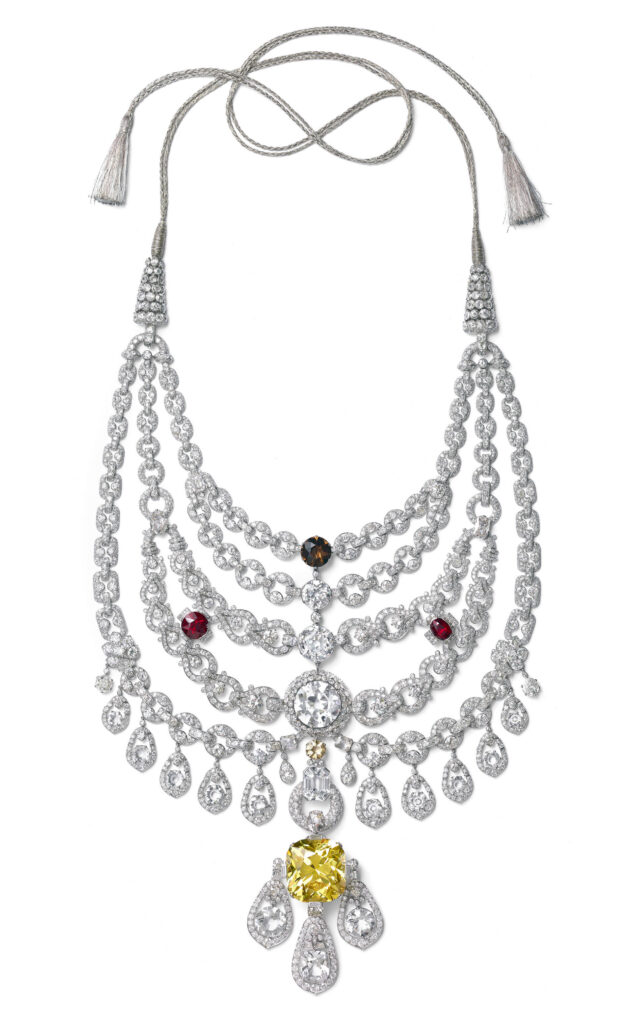
Made as a special order for Sir Bhupindra Singh, Maharaja of Patiala, Cartier Collection.
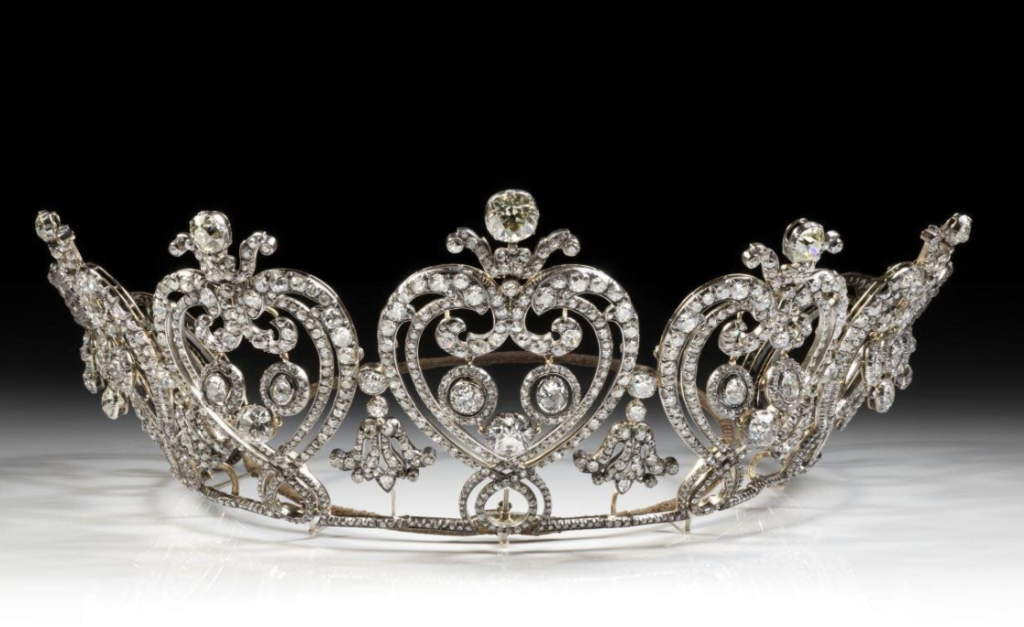
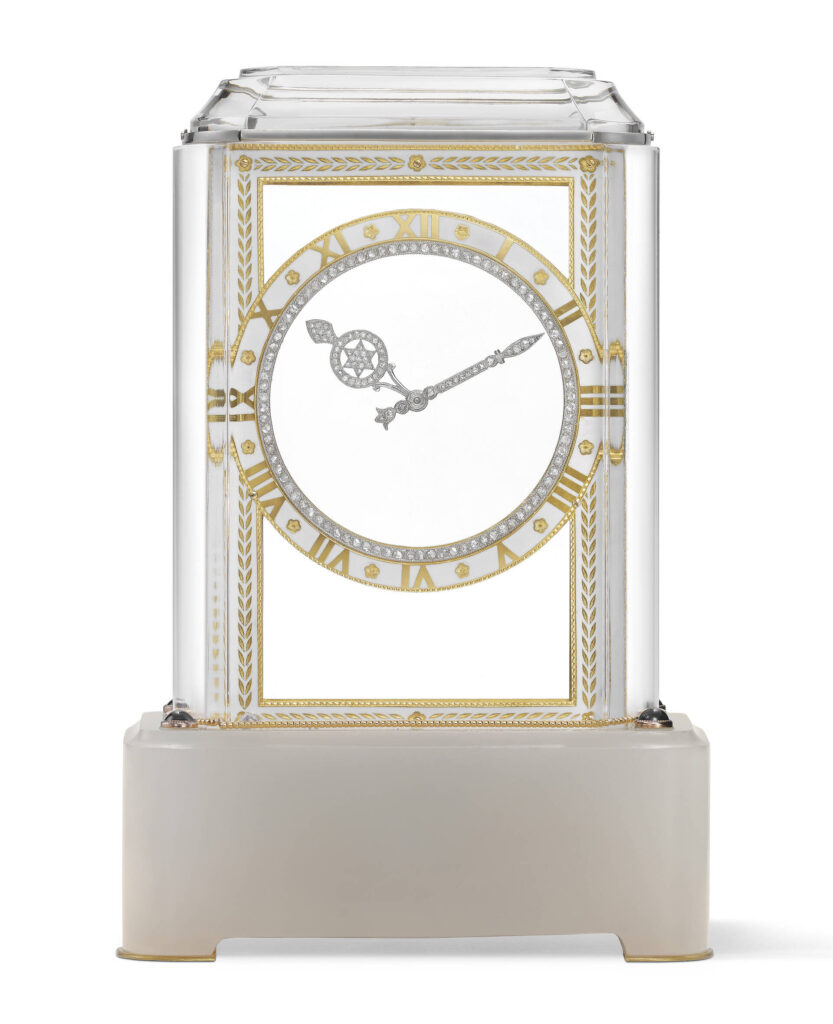
Photography: Nils Herrmann for Cartier Collection
Inspired by the work of the famous French magician and illusionist Jean Eugène Robert-Houdin, each clock—conceived by Louis Cartier and his clockmaker Maurice Coüet—was created to dazzle with both technical and artistic skill.
For the Gemmological Nerd
In 1912, Couët showed Louis Cartier something entirely new: A clock with diamond hands that seemed to float in the middle of a rock crystal case, quietly rotating to show the time despite appearing not to be connected to any mechanism or movement. It was inspired by a creation of magician Jean-Eugène Robert-Houdin, a 19th-century French illusionist and performer, and how it worked was a total mystery to the viewer. The name Mystery Clock stuck, and Cartier has continued to make these captivating timepieces ever since.
The inside of the clock’s face is made of rock crystal (or citrine in some cases). There are two rock crystal discs to which each hand is affixed. A clever clock mechanism hidden within the supporting elements of the face is directly in contact with the geared edge of the crystal discs (one for the minutes hand, one for the hours hand).
These discs are each surrounded by a tooth-edged boarder and driven by screws fixed at the ends of the axles, working at the levels of 3 and 9 o’clock, the driving pinions of the hands are hidden in each column of the frame. The rotation of the axles is activated by the movement hidden in the base, therefore, it is not the hands which move but each disc on which they are individually set.
Glass or Rock Crystal
Rock crystal quartz provides exceptional clarity, hardness, and the ability to hide finely machined rack‑and‑pinion teeth along the disc edges—while ordinary glass would be softer, less precise, and more vulnerable to chips or distortion.
The rock crystal discs (as well as the rock crystal walls of the clock itself) must be cut perpendicular to the c-axis, so polarization of the light is not seen – keeping them optically “invisible.”
Tap here for more about this exciting Cartier exhibition at the Victoria & Albert Museum in London!
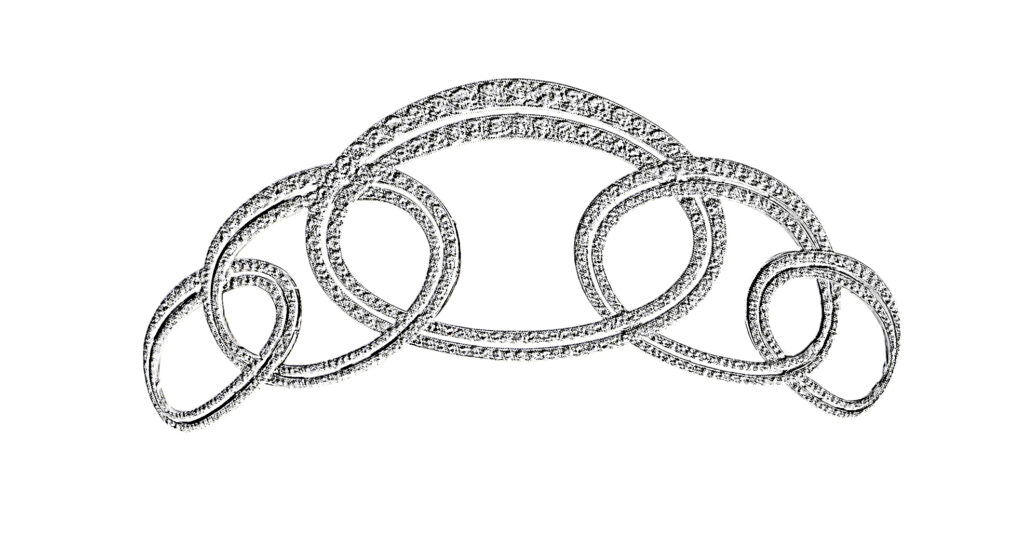
ADDED BONUS:
V&A Academy
Lunchtime Lectures: Cartier Inspiration and Innovation
FREE EVENT
Thursday, 3 July 2025
13.00 – 13.55
V&A South Kensington
Cromwell Road
London, SW7 2RL
Lydia and Manfred Gorvy Lecture Theatre
This talk will look at some of Cartier’s more inventive techniques, and the inspirations for those, through spotlighting some of the exhibition’s key items.
Helen Molesworth is the Senior Jewellery Curator at the V&A and Lead Curator of Cartier, opening at the V&A on 12th April this year. She has a broad international and academic background in the gem and jewellery industry, having worked for 25 years with the trade, gemmological laboratories, museums, and auction houses across Europe and Asia. She spent ten years as a jewellery specialist for Sotheby’s and Christie’s in Geneva and London, where she handled and ran sales of global importance including the private jewellery collection of HRH The Princess Margaret in 2006.
Helen has a degree in Classics from Christ Church, Oxford, is a Fellow of the Gemmological Association of Great Britain, and a Fellow of the Society of Antiquaries in London. Her book Precious, The History and Mystery of Gems Across Time, a personal insight into the history of gemstones, was published with Penguin in Spring 2024.
Tap here to get more information regarding the exhibit and the V&A Academy



